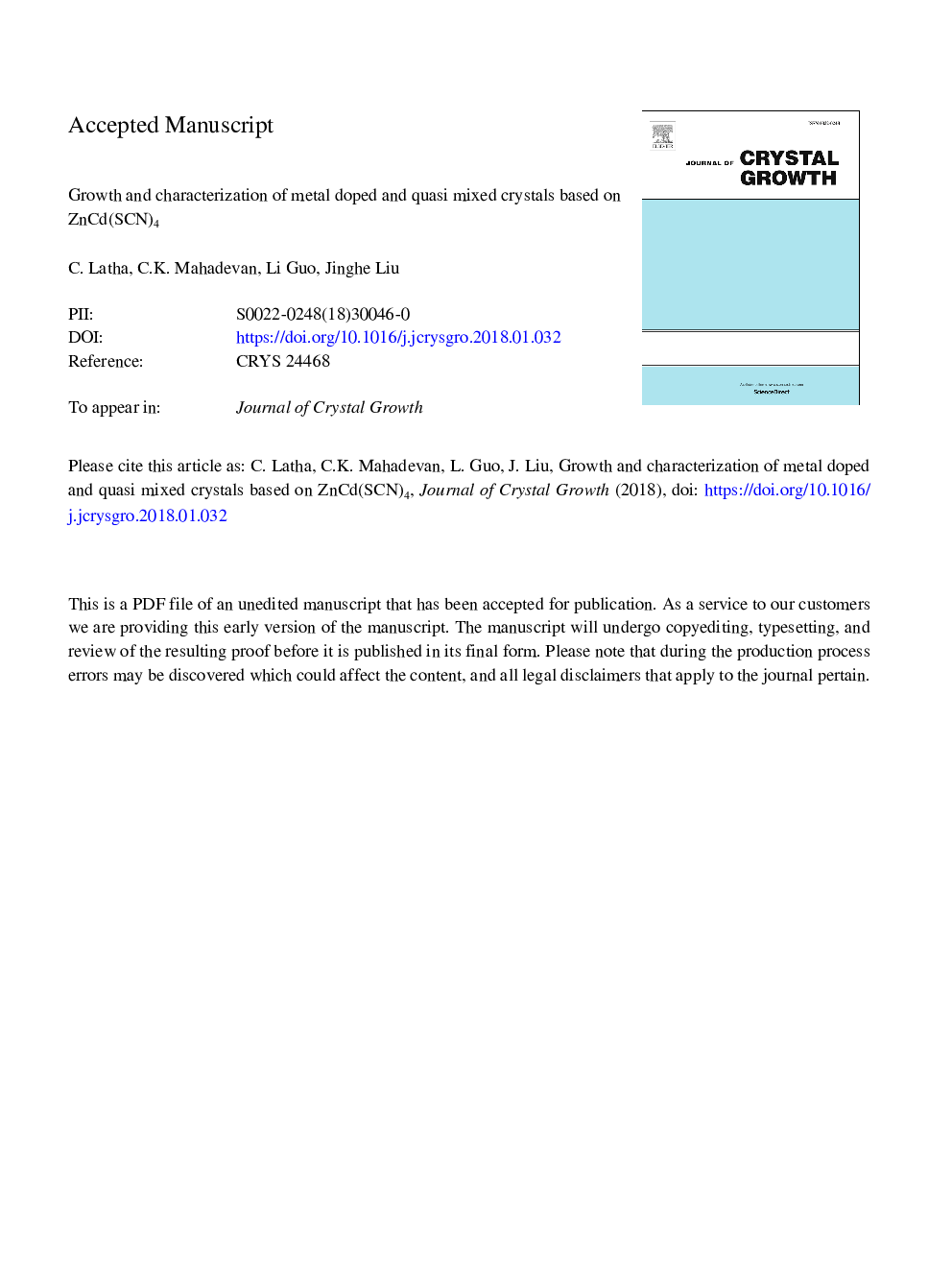| Article ID | Journal | Published Year | Pages | File Type |
|---|---|---|---|---|
| 8148771 | Journal of Crystal Growth | 2018 | 13 Pages |
Abstract
In order to understand the effect of forming hybrid crystals by doping with metallic impurities or by quasi mixing on the physicochemical properties of the basic material crystal, we have grown by the free evaporation method at room temperature and characterized (chemically, structurally, optically and electrically) un-doped and K+/Ca2+/Mn2+/Mg2+/Cu2+ doped (with 1â¯mol% concentration) ZnCd(SCN)4 and ZnxCd(2-x)(SCN)4 (with xâ¯=â¯0.0, 0.4, 0.8, 1.2, 1.6 and 2.0) single crystals. Single crystals could be grown with xâ¯=â¯0.0 (leading to Cd(SCN)2) but not when xâ¯=â¯2.0 (leading to Zn(SCN)2). Results obtained in the present study through X-ray diffraction and EDAX spectral measurements indicate the formation of the above hybrid crystals. The optical (UV-Vis-NIR spectral and SHG efficiency) measurements indicate significant changes in optical transmittance and SHG efficiency due to doping as well as quasi mixing. Dielectric measurements made in the temperature range 40-150â¯Â°C with a fixed frequency of 1â¯kHz indicate a normal dielectric behavior for all the eleven crystals grown. Moreover, the present study indicates an increase of dielectric constant and SHG efficiency when ZnCd(SCN)4 crystal is doped with a metallic impurity whereas a decrease of dielectric constant and SHG efficiency when quasi mixing is done.
Keywords
Related Topics
Physical Sciences and Engineering
Physics and Astronomy
Condensed Matter Physics
Authors
C. Latha, C.K. Mahadevan, Li Guo, Jinghe Liu,
